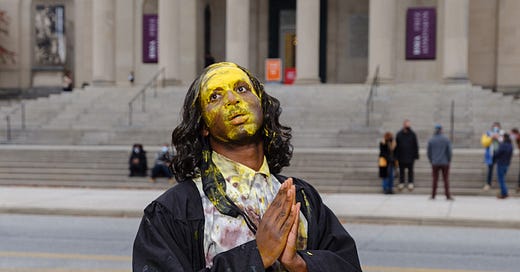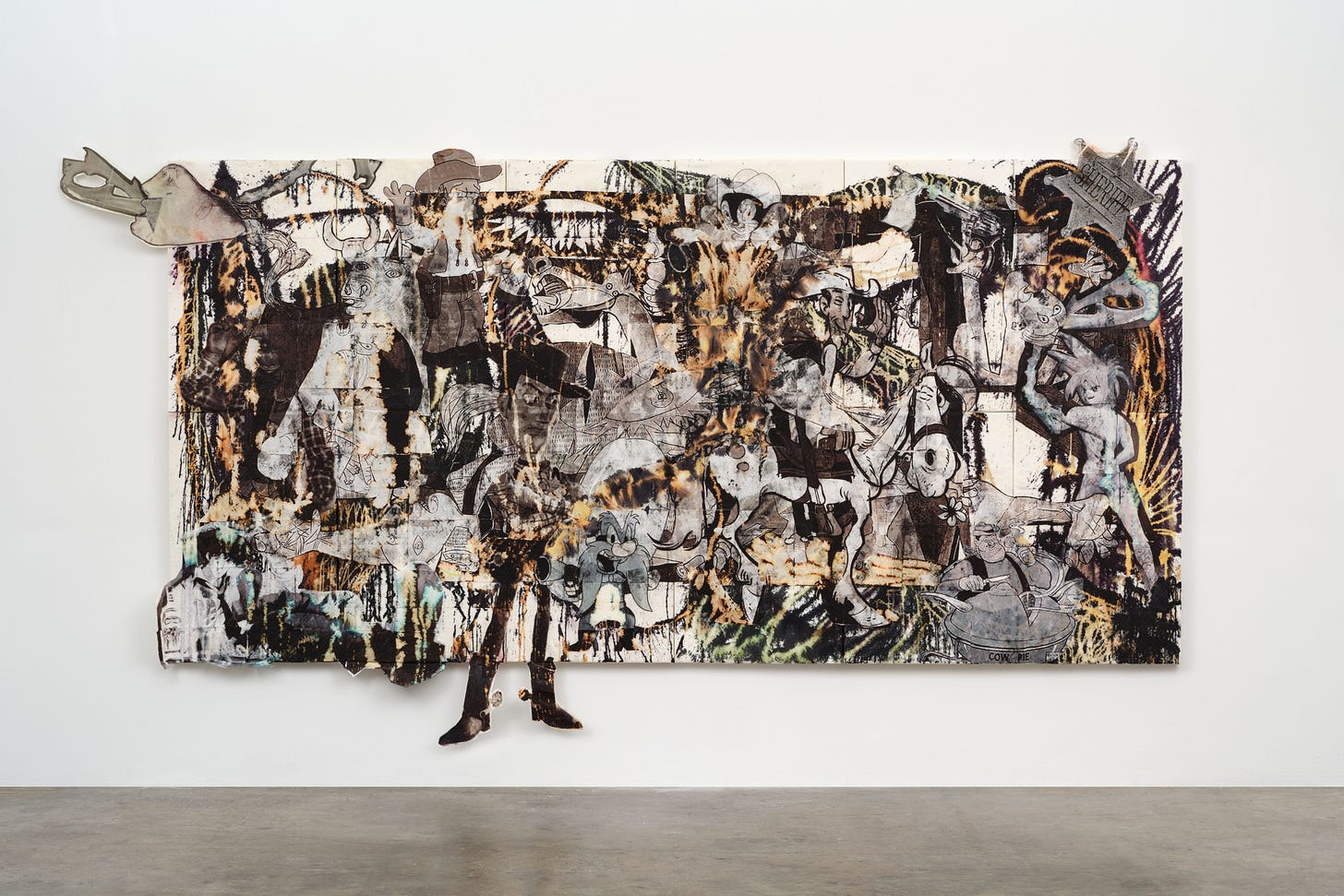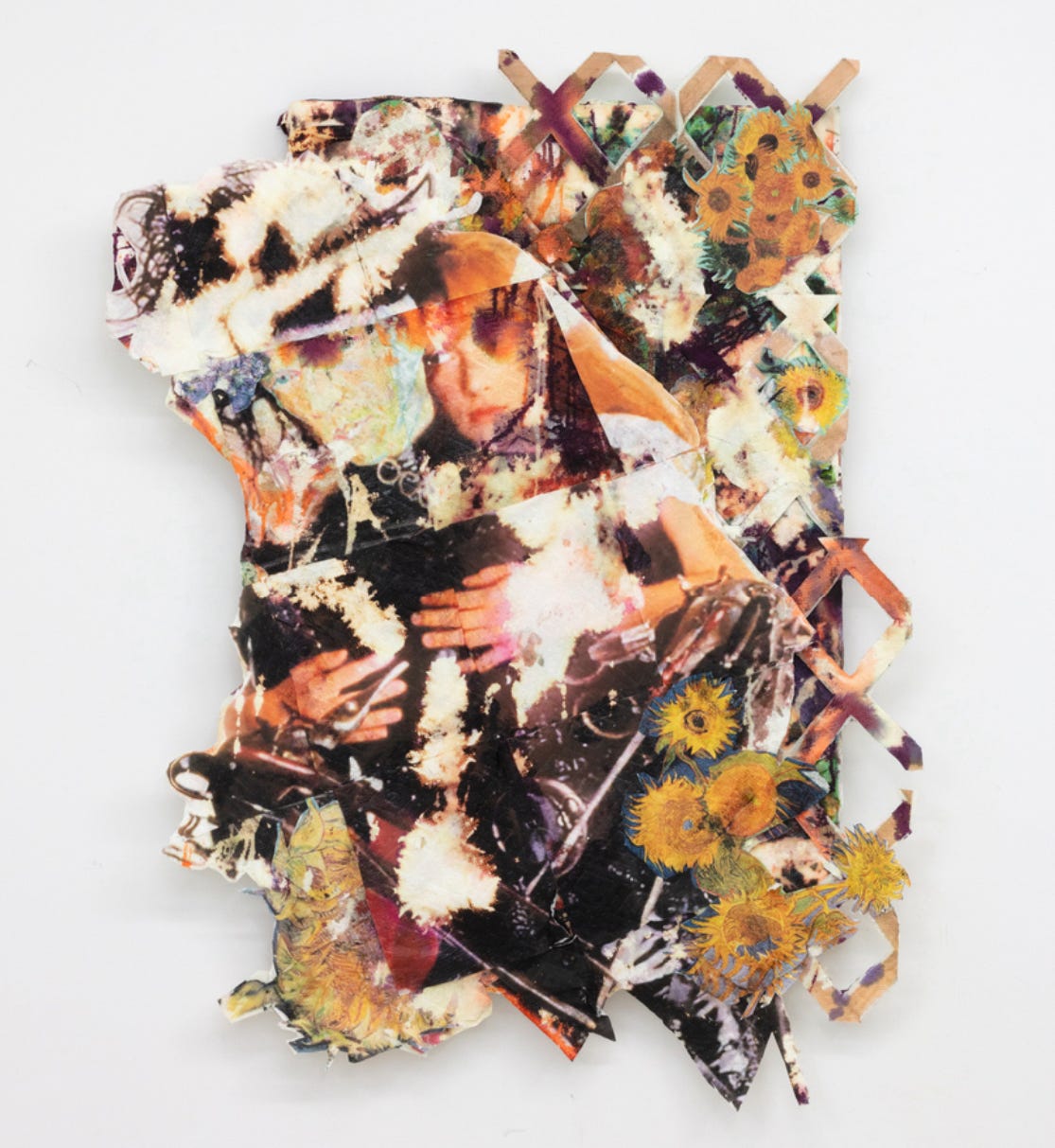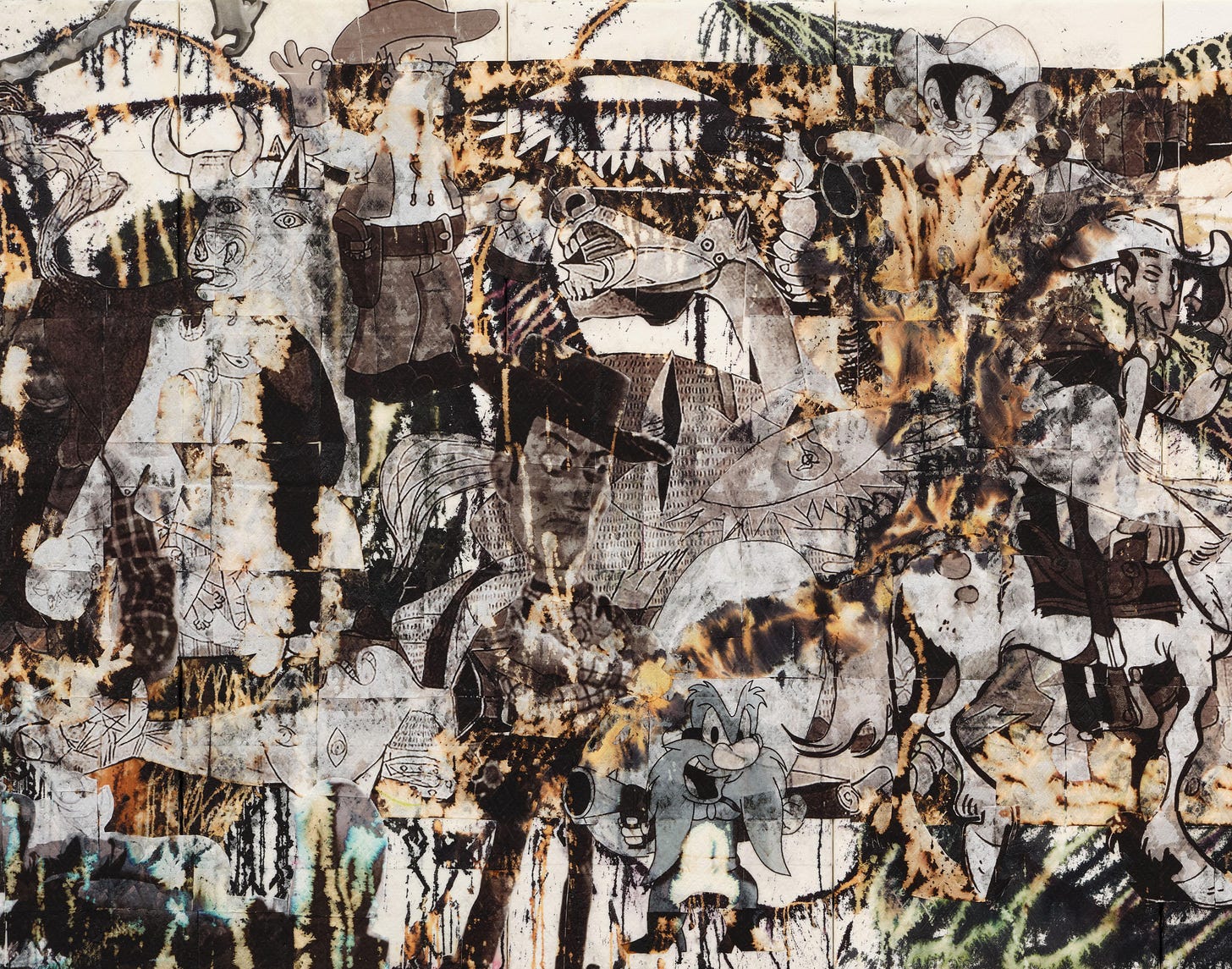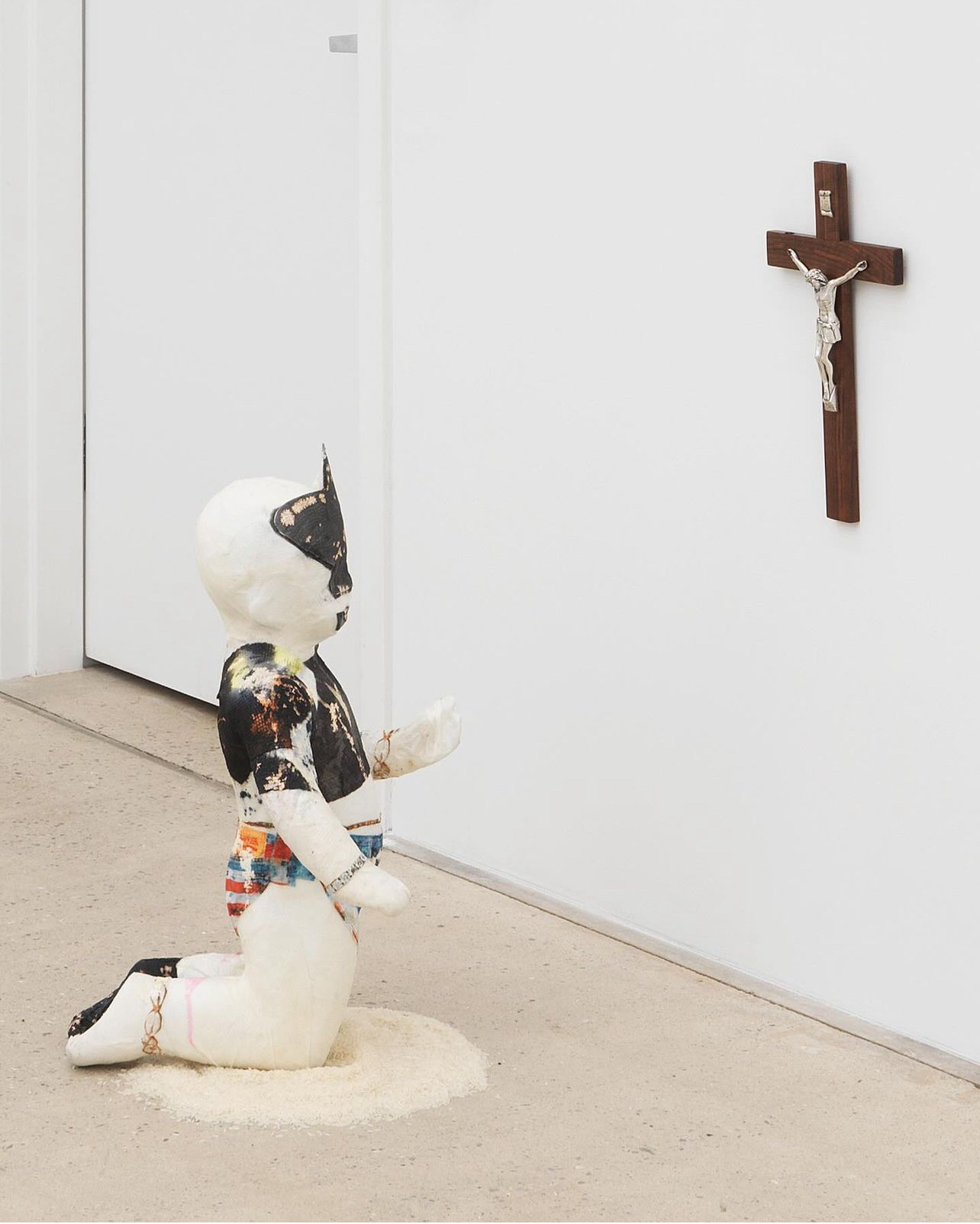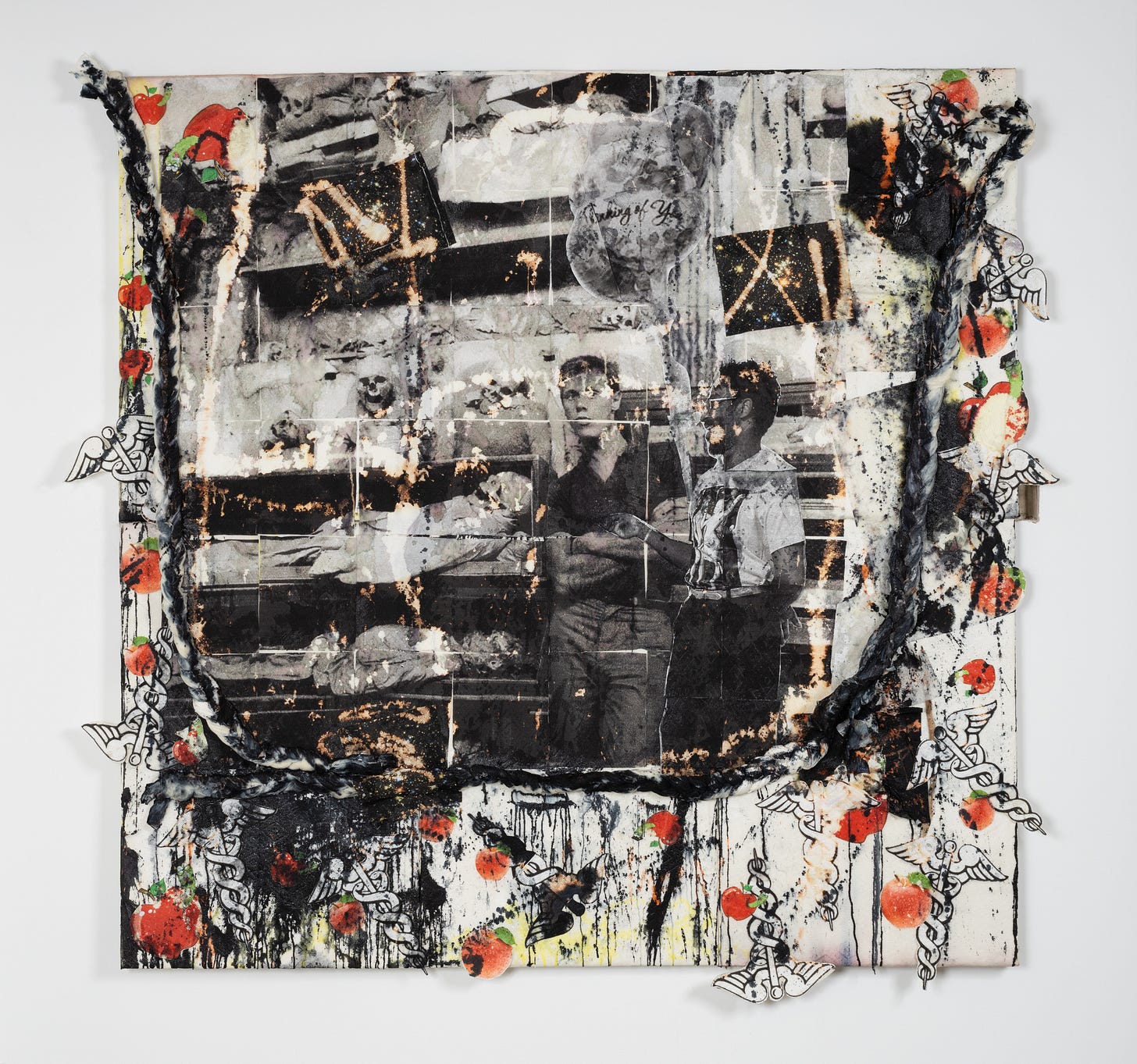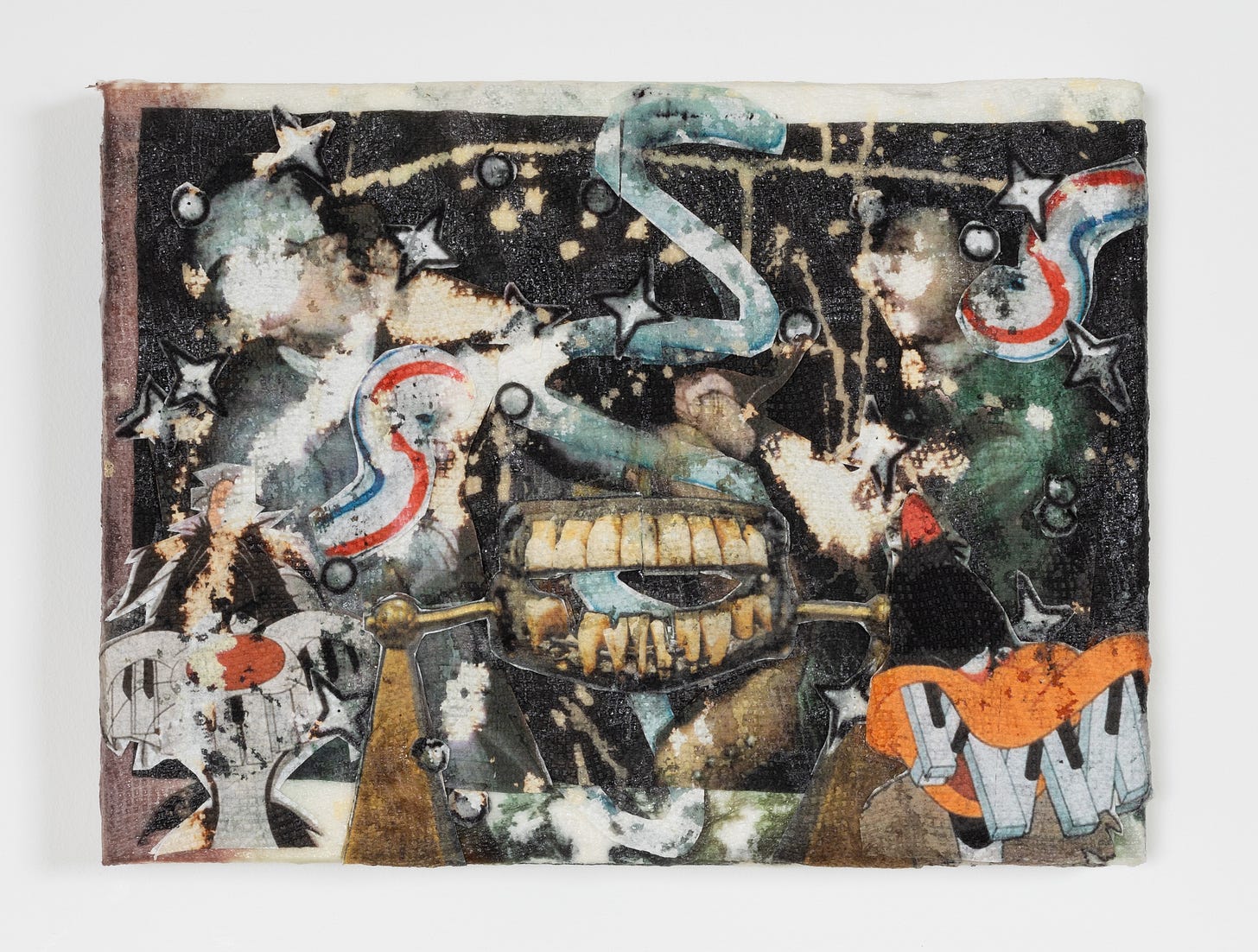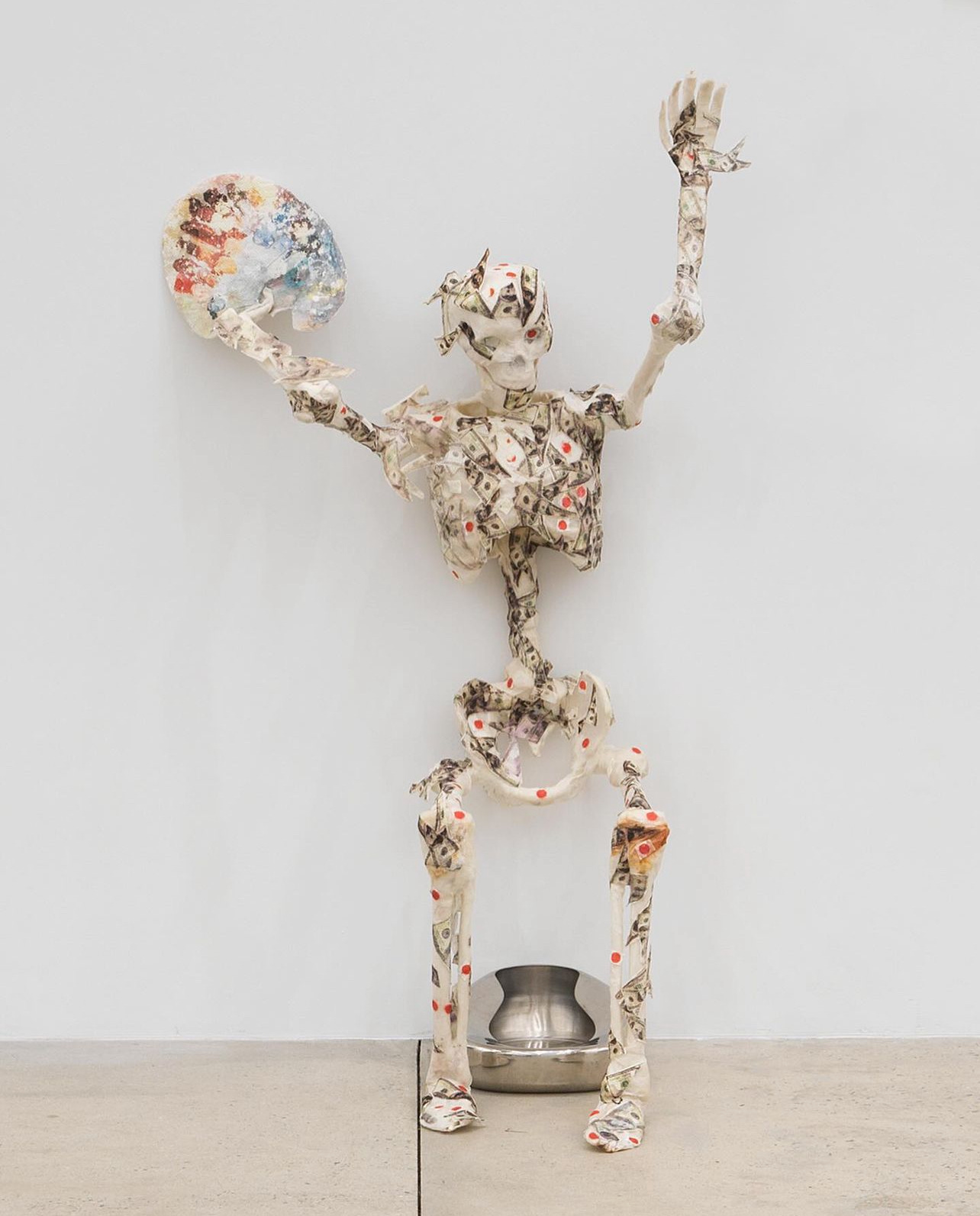Regular readers will know this newsletter leans heavily into painting (I am myself a painter). And yet, I’ve found that some of the most exciting work straddles the line between mediums.
And so, this week, I was excited to speak to the Ivorian American artist Monsieur Zohore, whose art takes many forms: sculpture, painting, installation, performance, video. I was fascinated by his multi-faceted approach to making art, and his steadfast refusal to pigeonhole his own creativity.
I swiftly dropped him a DM and he was super generous with his answers, so I’ll keep my intro brief and let him articulate his enticingly broad approach to making art.
Hey Monsieur Zohore. Firstly, can you tell me about that name? I’m guessing it’s a moniker with French influence?
Outside of the honorific, Zohore is simply my name—not just mine, but my father’s, my brother’s, and a host of other men in my Ivorian family. It’s also a joke about having a job. French happens to be my first language, but there’s nothing invented about it. People often assume it’s some kind of disguise, which I love, because isn’t it fascinating to move through the world disguised as yourself?
You told me you weren’t strictly a painter, but some of your pieces feel like they have a language that speaks to painting. Can you describe your practice in terms of the different forms it takes?
My practice is fascinated by the medium precisely because I believe painting is for idiots. Literally goo goo gaa gaa, poopy gloopy shloopy shit. Beneath that childish idiocy lies a profound perversion: painting’s obsession with itself, its inherent whiteness, and its thinly veiled racism and abjection are deeply troubling yet irresistibly ripe. That perversity is delicious to me; it’s perfect material. I exploit painting’s seductive lie—its masquerade of innocence—to slip in sharper questions about mourning, labor, economics, religion, and domesticity.
My practice isn’t bound to one form; I create performances, videos, installations, and sculptures, each engaging with these ideas. Even my paper towel works aren’t paintings at all; they're sculptures in full drag as painty-waintings, reveling gleefully in the same perverse lie. Ultimately, everything is about transfiguration—think Jesus, think Professor McGonagall—taking the mundane, cultural histories, and the sinister banalities of life and reshaping them into something sharp, uncomfortable, and impossible to unsee.
I was curious about your mixed media pieces. Can you tell me about Van Gogh Scissor Hands, which is apparently mixed media on canvas and looks like a beautiful sort of collage?
The works are made from fabric dye, inkjet prints, and bleach on an endless amount of paper towels bound with archival bookbinding polymer. I used to list all eleven herbs and spices of my secret recipe until a gallery asked me to simplify for the materially unadventurous. I kept the edit because confusion, in my practice, is a form of generosity. Van Gogh Scissor Hands casts the most over-mythologized wounded mascot in Western art history as Tim Burton’s dreamy, gothic, lonely boy—a tragic-comic cutie undone by the very hands that made him special. It’s all about the cut: the cut of the hedge, the cut of the ear, the cut of the paper towel. What happens when pain becomes production? When the only thing you have to offer is your own unraveling? I’m not interested in preserving van Gogh’s legacy—I’m watching it collapse under the weight of its own sentimentality.
Winona Ryder rides shotgun through the composition as a spectral double—playing both Kim Boggs, the pastel-clad suburban ingénue from Edward Scissorhands, and Rachel, the sex worker van Gogh allegedly mutilated himself for. In my work, she becomes a stand-in for every woman asked to hold space for a man’s spiral. She’s not quite witness, not quite accomplice—just another figure left to romanticise the mess… truly what a drag.
How do you source and select the images in those pieces? Some of it seems quite fun and pulled from pop culture - is there a deeper significance?
The mining is not fun. The images are supposed to look fun—but like everything else in my work, that’s a trick or a trap. I don’t work iteratively. I build arguments. Each body of work begins with obsessive research—watching, reading, collecting, not to illustrate an idea but to indict one. I look for images that carry the sediment of power. Things that look harmless but rot from the inside.
Can you tell me about Western, 1937–2022?
It looks like a cartoon, but it’s a war painting. I tore Guernica limb from limb and stitched it back together with Homer Simpson, Cowboy Bebop, Lucky Luke, and Murakami’s My Lonesome Cowboy. These aren’t citations—they’re viruses. Glitches in the image machine of empire. The Western genre is global now: franchised, commodified, endlessly rebooted. But the real violence isn’t the gun—it’s the loop.
And the title doesn’t just refer to cowboys. It also refers to Western painting, Western power, and Western hegemony. I made the work during the war in Ukraine, watching as Guernica was paraded again as a pacifist emblem. But Guernica isn’t innocent. It was born from the Spanish Civil War, yes—but it also helped define the West’s favourite aesthetic fantasy: the idea that male genius could redeem atrocity. I don’t admire Picasso—I see him for what he is. His machismo, his misogyny, his cult of suffering all live in my painting too, but exposed like a wound, not worshipped.
Western is about what happens when the aesthetic and the militaristic share a bloodline. I collapse the cowboy myth and the painting canon into the same poisoned system—one that cannot stop narrating conquest as progress. The surface is scorched, bleached, dyed. Images printed and layered until they stutter. The painting droops off the wall. At the bottom, cartoon legs—mine—poke out like a gag. But that’s not what’s holding it up.
I was trying to figure out how you treat your materials and create this beautiful sort of melted effect, but I honestly have no idea.
Good, I told you what it’s made of, but the how… That’s one secret I’ll never tell. Xoxo Gossip Girl 💋
In all seriousness, that’s not an accident. I want you to feel disoriented. The surface shimmers, slumps, folds—it looks delicate, maybe even like it will rip or tear—but it’s carefully orchestrated to deceive you. There are no brushstrokes. Except for the ones I simulate—either through inkjet printing or the braided paper towels I manipulate to mimic the artist’s “hand” or the way I apply the glue. It’s all theatre. A sleight of material. I use fabric dye, bleach, and archival polymer to sculpt a surface that pretends to be gestural while being completely mechanical.
I don’t believe in material honesty. I believe in control, misdirection, performance. The shimmer you’re seeing is labor disguised as beauty. The melt is pressure. The work looks like it’s falling apart, but it’s not. It’s engineered to hold its shape just long enough for you to doubt it.
You’re looking at something fragile pretending to be indestructible. Or maybe it’s the other way around.
Lastly, what are you working on at the moment?
It's too soon to discuss what I’m working on now, but please keep your eyes peeled for my fall exhibition at KOW Berlin. If everything goes according to plan, this show will be the inconvenient truth of my dreams lol. But I can say that I’m still in the place I was when I made my last show last spring at my beloved Magenta Plains in New York City. Get Well Soon–the show and its title–started as a joke—being an “emerging artist,” like being a woman, or a person of colour, or anyone marked as marginal, is treated like an illness that people half-heartedly, begrudgingly wish you well for in public.
But the works were not cute. They were grotesque. Devotional. Desperate.
In Beloved (Baby/Maker), a grubby, slutty baby kneels on dry rice, a posture of self-inflicted punishment. There’s no parent in sight—we, the viewers, become the authority, the voyeur, the one who permits the pain. It wears Daisy Dukes and a Basquiat tramp stamp, crowned with Kerry James Marshall’s early self-portrait as a mask. The tattoo on its head reads “Beloved”—not affection, but ownership. A nod to Toni Morrison’s ghost-child, caught between erasure and hypervisibility. Its body is adorned with cowry shells and fake diamonds—bridging African inheritance with cheap spectacle. It’s a child raised inside empire, already trained to self-sacrifice for applause.
Thinking of You reimagines Peter Hujar’s photograph of Paul Thek in the Capuchin catacombs. I step into the frame, holding a balloon that reads “Thinking of You”—a gift shop sentiment dropped into a queer grave. I wear a T-shirt of Lucas Cranach’s Adam and Eve, with apples scattered around me, each infested with a worm in a graduation cap. It’s classroom decor, poisoned. A critique of queer mentorship, legacy, the impossible promise of “getting better.” The surface is paper towel, again. Always paper towel. Absorbent, disposable, stained, divine.
In Halitosis, I embed George Washington’s slave-forged dentures into a toothpaste-caked landscape, complete with Sylvester and Daffy in a daze—stars spinning above their heads, red, white, and blue ooze sliding across the scene like a patriotic gag. The teeth are piano keys. The violence is musical. I’m pairing John Collier’s The Dentist with a Warner Bros. cartoon and telling you exactly what this country’s mouth is full of.
And Tableaux / Vivant, 1993–2024—a skeleton bound in red “SOLD” stickers, dollar motifs, and braided paper towel. It’s raising its arms in triumph or surrender, I’m not sure which. A bedpan full of water sits beneath it like a wishing well–that audience was invited to through change into The surface is speckled with a commercialized chickenpox of sale stickers, a rash of market value spreading across the figure like a price-tag disease. The skeleton could be anyone, but to me, it’s every painter who ever burnt out trying to matter. It’s me. It’s you. It’s New York. It’s what’s left after the hustle eats the body but not the hunger.
So no, I don’t take myself lightly. I just refuse to play respectability politics with grief. The work is about survival—but I think survival isn’t always quiet. Sometimes it sings. Sometimes it screams. Sometimes it blows you a kiss from the coffin.
Follow Monsieur Zohore on Instagram: @mzohore
The Best Shows in London This Month
Rose Wylie at David Zwirner (ends 23 May)
James Cabaniuk at Workplace (ends 3 May)
Oliver Lee Jackson at Lisson (ends 17 May)
Sim Smith have an exciting group show (ends 19 April)
Tim Stoner at Pace (ends 12 April)
Thanks for reading, see you next time!
Oliver & Kezia xx
Palette Talk is free and we hope to grow with your support. If you’ve enjoyed reading, drop us a donation via PayPal…


